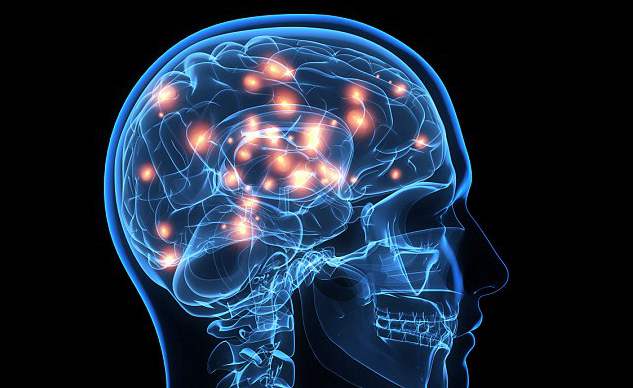导读:近日,谷歌一名专家重新提出了上传大脑到计算机,从而实现永生的想法,他还指出人类几乎可以完全肯定地生活在一个计算机模拟的世界中。

People have always dreamed about going beyond the limitations of their bodies: the pain, illness and, above all, death.
人类一直在梦想着要超脱肉体的限制:不受痛苦、疾病和死亡的威胁。
Now a new movement is dressing up this ancient drive in new technological clothes.
而现在,在新科技的帮助之下,这一古老的渴求又向前迈进了一步。
Referred to as transhumanism, it is the belief that science will provide a futuristic way for humans to evolve beyond their current physical forms and realise these dreams of transcendence.
这一技术被称为“超人类主义”,简单来说,就是科学将会给人类提供一种未来主义的方法,使得人类能够在超脱其目前物理形态的情况下进化,并且实现“超然”的梦想。
Perhaps the most dramatic way transhumanists believe that technology will transform the human condition is the idea that someone’s mind could be converted into digital data and ’uploaded’ into an immensely powerful computer.
超人主义者认为有很多方法可以改变人类的形态,而也许其中最戏剧性的方法就是某人的思想能够被转换成为数字化数据,然后上传到一个非常强大的计算机里。
This would allow you to live in a world of unbounded virtual experiences and effectively achieve immortality (as long as someone remembers to do the backups and doesn’t switch you off).
这将使你生活在一个无限的虚拟体验世界中,从而实现事实上的永生(只要有人记得做备份,还不会关掉你的话)。
Yet transhumanists seem to ignore the fact that this kind of mind-uploading has some insurmountable obstacles.
但是,超人主义者似乎忽略了一个事实,这种思想上传的方法有一些无法逾越的障碍。
The practical difficulties mean it couldn’t happen in the foreseeable future, but there are also some more fundamental problems with the whole concept.
实践上的困难意味着在可预见的将来这种方法不会成功,但是在整个概念上,也存在着一些更加根本性的问题。
The idea of brain uploading is a staple of science fiction.
上传大脑的点子是科幻小说一个非常重要的主题。
The author and director of engineering at Google, Ray Kurzweil, has perhaps done the most to popularise the idea that it might become reality – perhaps as soon as 2045.
雷·科兹威尔是一名作家和谷歌的工程总监,他也许在普及这一可能成为现实的概念上付出了最大的努力--这个概念也许到2045年的时候就会变成现实。
Recently, the economist Robin Hanson has explored in detail the consequences of such a scenario for society and the economy.
最近,经济学家罗宾·汉森展开了调查研究,深入研究了这一方案可能给社会和经济带来的后果。
He imagines a world in which all work is carried out by disembodied emulations of human minds, running in simulations of virtual reality using city-size cloud computing facilities.
他想象了一个世界,在这个世界中所有的工作都是由人类思维的仿真实体完成,在虚拟现实模仿世界中运行,采用整个城市那么大的云计算设施。
It’s a short step from the idea that our minds could be uploaded, to the notion that they already have been and that we are already living in a Matrix-style computer simulation.
从人类的思想可以被上传这个点子,到人类已经有了的概念、以及我们人类已经生活在一个矩阵式计算机模拟世界中的这一事实,并不遥远。
Technology entrepreneur Elon Musk recently revived this discussion by arguing the chance that we are not living in a computer simulation was only ’one in billions’.
科技企业家埃隆·马斯克最近重新提出了这一讨论,他认为人类没有生存在一个计算机模拟世界中的概率只有“十亿分之一”。
Of course, this is just a technological revival of the idea that reality is an illusion, which has been discussed by philosophers and mystics for hundreds of years.
当然,这只是从科技上对“现实是一种虚幻”这一概念的再讨论,在数百年的时间里,哲学家和神秘主义者们已经就这一问题展开了许多讨论。
But there are some serious problems with the idea that we could upload our minds to a computer.
但是对于人类可以上传思维到计算机中这一想法有一些严重的问题。
To start with, the practical issue: our brains each have trillions of connections between 86 billion or so neurons.
首先,实际性的问题:人类大脑中有860亿左右的神经元,在这些神经元之间有上万亿个神经连接。
To replicate the mind digitally we would have to map each of these connections, something that is far beyond our current capabilities.
要以数字化的方法来复写人类的思想,我们必须将这些神经连接中的每一个都刻画下来,而凭我们目前的能力还远远不能办到。
With the current speed of development of computers and imaging technologies, we might be able to do this in a few decades but only for a dead and sectioned brain.
就目前计算机和成像技术的发展速度来说,我们可能在几十年后实现这一想法,但是对象只能是一个已经死亡了的大脑的切片。







